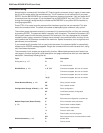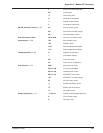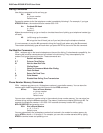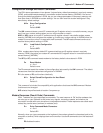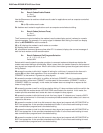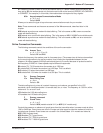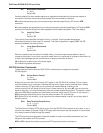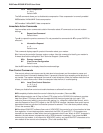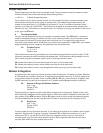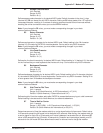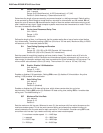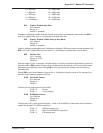
RASFinder RF300E/RF310E User Guide
RF300E/RF310E
172
Nn Modulation Handshake
n = 0 or 1
Default: N1
Controls whether the local modem performs a negotiated handshake with the remote modem at
connection time when the communication speed of the two modems is different.
N0 enables handshaking only at the communication standard specified by S37 and the ATB
command.
N1 always begins the handshake only at the communication standard specified by S37 and the ATB
command, but allows fallback to a lower speed as the handshake proceeds. This is the default.
\Tn Inactivity Timer
n = 0
Default: \T0
The inactivity timer specifies the length of time, in minutes, that the modem waits before
disconnecting when no data is sent or received. This timer is specified in register S30. The \T0
command disables the inactivity timer.
Yn Long Space Disconnect
n = 0, 1
Default: Y0
When two modems are connected in reliable mode, a link disconnect request packet is sent to
request a disconnect. In non-error correction mode, there is no polite way to request a disconnect. As
a result, some garbage may be received when a hang-up command is issued.
Y0 disables the modem’s use of the break signal.
Y1 enables long space disconnect.
RS-232 Interface Commands
These commands define how the ISIHP-2S/2U modems use and respond to standard
RS-232 signals.
&Cn Carrier Detect Control
n = 0 or 1
Default: &C1
Allows you to control the Carrier Detect (CD) signal on the RS-232/V.24 interface. This is a signal
from the modem to your computer indicating that the carrier signal is being received from a remote
modem. Normally, CD goes high (turns on) when the modem detects a carrier on the
communications link and drops (turns off) when it loses the carrier. By using &C, you can force the
signal to stay high, or to drop momentarily when the remote modem disconnects. This option is useful
with some CBX phone systems and mainframe front ends, which require CD to act in this manner.)
&C0 ignores the state of the carrier from the remote modem. CD is forced high.
&C1 allows CD to act normally—to go high when the modem detects a carrier, and to drop when it
loses the carrier.
&Dn Data Terminal Ready Control
n = 0, 1, 2, or 3
Default: &D2
The Data Terminal Ready (DTR) signal on pin 20 of the RS-232/V.24 interface must be high, or on, in
order for the modem to operate. A high DTR signal tells the modem that the computer it is connected
to is ready to communicate through the modem.
The DTR signal can also be used to cause the modem to reset to its default parameters, as if you
had given the modem an ATZ command.
&D0 (or &D) causes the modem to ignore the DTR signal and treat it as always on.





